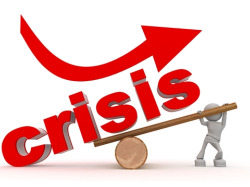In the dynamic landscape of Human Resources, the shift towards data-driven decision-making has become pivotal for organizational success. By harnessing the power of data, HR professionals can enhance alignment with organizational objectives, drive informed strategies, and foster a culture of continuous improvement. This article explores how HR can boost data-driven alignment for greater efficiency and effectiveness.
1. Embracing People Analytics
One of the primary ways HR can boost data-driven alignment is by leveraging people analytics. By collecting and analyzing data on workforce demographics, performance metrics, and employee engagement, HR gains valuable insights into the organization's human capital. People analytics enables informed decision-making regarding talent acquisition, retention, and development.
2. Aligning HR Metrics with Business Objectives
To boost data-driven alignment, HR metrics must align seamlessly with broader business goals. Whether it's reducing time-to-hire, improving employee satisfaction, aligning HR metrics with strategic objectives ensures that HR efforts directly contribute to the organization's success.
3. Implementing HR Information Systems (HRIS)
Investing in robust HR Information Systems is a game-changer for data-driven alignment. HRIS facilitates the seamless integration of various HR functions, streamlining data collection, storage, and analysis. With centralized data, HR professionals can make more accurate and timely decisions, fostering alignment with organizational strategies.
4. Utilizing Predictive Analytics for Talent Management
Predictive analytics empowers HR to anticipate future trends and make proactive decisions. In talent management, predictive analytics can forecast turnover rates, identify high-potential employees, and streamline succession planning. By staying ahead of workforce trends, HR can align talent strategies with the organization's long-term vision.
5. Personalizing Employee Development
Data-driven alignment extends to personalized employee development. By analyzing performance data, identifying skills gaps, and understanding individual learning preferences, HR can tailor development programs to meet specific employee needs. This not only enhances alignment with organizational goals but also fosters a culture of continuous learning.
6. Enhancing Recruitment Strategies
Data-driven recruitment strategies are a cornerstone of effective HR alignment. Analyzing data on successful hires, applicant sources, and time-to-fill positions can optimize recruitment processes. By understanding what works best for the organization, HR can align recruitment strategies with the overall business strategy.
7. Establishing Key Performance Indicators (KPIs) for HR
Defining and tracking KPIs for HR functions is crucial for data-driven alignment. Whether measuring employee engagement, turnover rates, or the effectiveness of training programs, KPIs provide tangible metrics for HR's impact on organizational goals. Regularly evaluating these KPIs ensures continuous improvement and alignment with strategic objectives.
8. Cultivating a Culture of Data Literacy
To boost data-driven alignment, HR professionals and organizational leaders must cultivate a culture of data literacy. This involves providing training on data interpretation, promoting a data-informed mindset, and encouraging collaboration between HR and other departments. A workforce that understands and values data fosters greater alignment with overall business objectives.
9. Iterative Improvement Through Feedback
Feedback loops are essential for continuous improvement. HR can leverage data to gather feedback from employees, measure the effectiveness of HR initiatives, and identify areas for enhancement. This iterative approach ensures that HR practices align not only with the current organizational goals but also adapt to evolving needs.
Wrapping it up
HR's ability to boost data-driven alignment is a transformative force for organizations. By embracing data analytics, aligning HR metrics with business objectives, and fostering a culture of data literacy, HR can elevate its strategic role. The result is a more agile, informed, and aligned HR function that contributes directly to the achievement of organizational success.
Latest posts by Tresha Moreland (see all)
- Navigating Required Wage Increases: Strategies for Leaders in Tight Budgets - April 29, 2024
- Navigating Ethical Dilemmas in Organizations - April 28, 2024
- Recession 2008 Versus 2024: Lessons Learned and Key Workforce Differences - April 24, 2024













